Ingrina Shieh joins Slow Ways super-volunteers for a walk from Henley-in-Arden to Stratford-upon-Avon
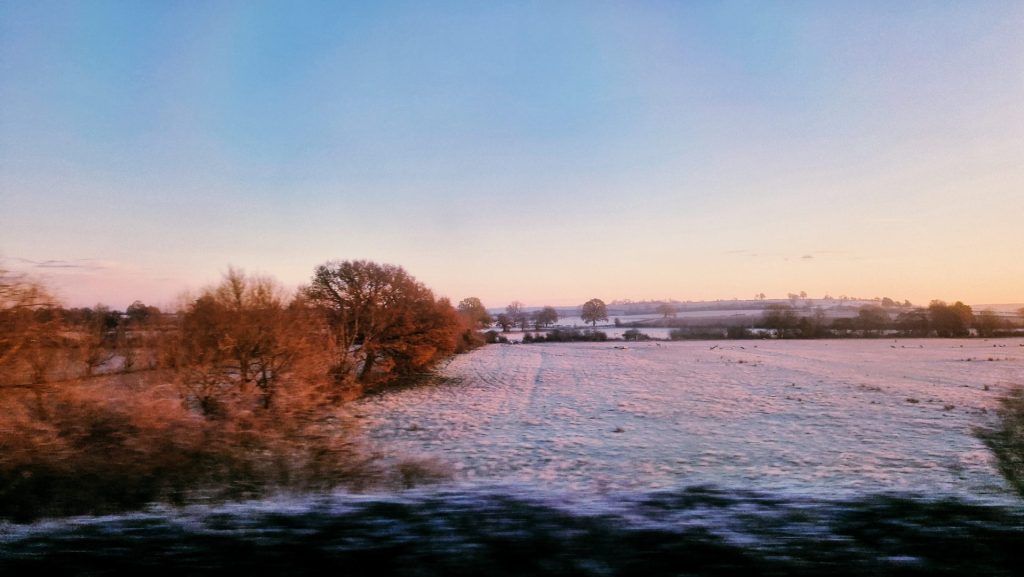
I am on my fourth train by the time the sky fades to blue, then purple to pink to orange.
It’s an uncommonly early Saturday start, but I’ve been getting used to this. Slow Ways walkers choose all sorts of routes throughout Great Britain to expand the network, and anywhere within reach of main train stations is fair game. Sometimes it’s a short jaunt across the Thames; other times, it’s like this morning – a four-hour, six-train journey through the British countryside.
Though this kind of transport gymnastics used to seem tedious, each stop adds to my mental map of the train network. Paddington to the west and southwest, Clapham Junction or Victoria for the south and southeast, Euston or Kings Cross to the midlands and everywhere north.
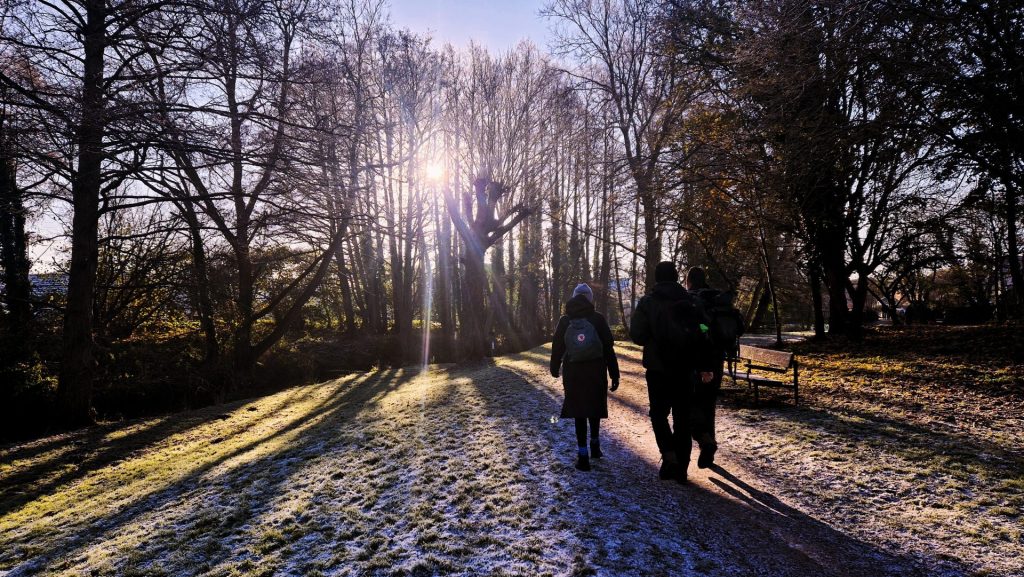
Today, we will walk Henstr 3, Henley-in-Arden to Stratford-upon-Avon, neither to which I’ve been, so I am on the edge of my seat anticipating the adventures ahead.
As I daydream of streets lined with thatched roofs and Elizabethan facades, rail disruptions are causing chaos on this morning’s travel and staggering our arrival times. Though we are all confident solo walkers, a group walk means no one is left behind and we agree to split, some starting at 10am and others at 11am, and meet in Stratford-upon-Avon.
Despite a cancelled connection at Leamington Spa, I meet David, Hugh, Sumaiya, Ken and John at 10am near a bench across from the medieval Church of St John the Baptist. After a few introductions we set off to pioneer Ken’s new route, Hugh taking the lead, with Mary and Saira to follow in our footsteps at 11.
The route takes us across the town and past a small farm before opening up into a series of fields. From the train, they were a blur of white sheets; up close, you could see all the tufts of grass poking out beneath the frost, the longer stalks covered with sparkling crystals: hoar frost.
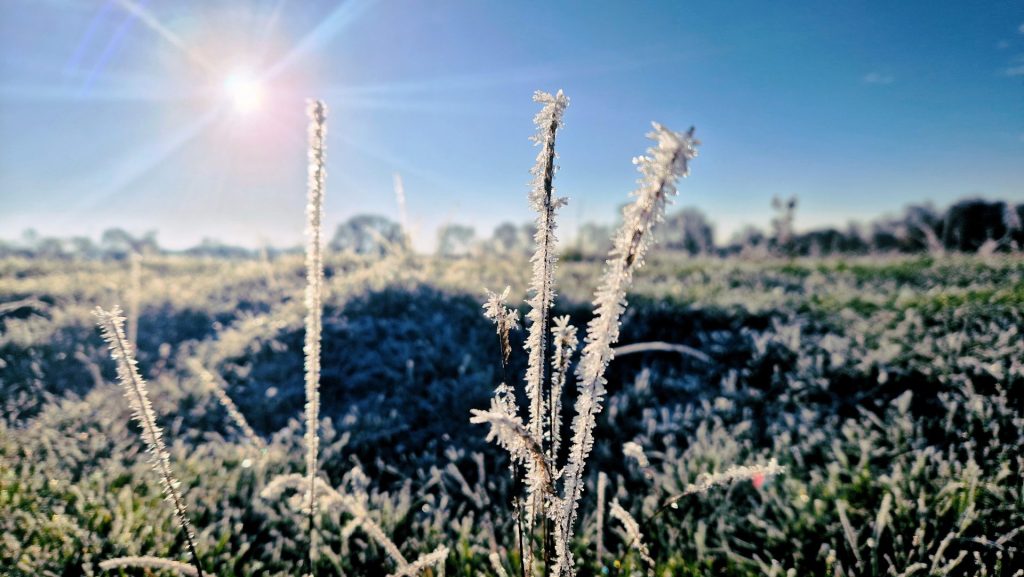
Frozen blades crunch beneath my boots as I drift in and out of conversation, stopping occasionally to take photos (everything is gorgeous). While I love walking alone, I realise that going solo can limit appreciation of a landscape in its entirety. With others I can see how paths and horizons stretch and expand in relation to a human figure, how phases of daylight change the colour of someone’s eyes, how boots spread mud to leave a trail of fresh prints.
We cross a gate onto a path along the Stratford-upon-Avon canal, which we will take all the way to Stratford-upon-Avon. The path is mostly generous in width and terrain. Muddy sections have frozen over so we can walk on the ridges without slipping and sinking, and we can walk comfortably in pairs and rotate partners. Each person points out different things; a confused moorhen walking on the frozen water, the abandoned boathouse covered with fallen leaves, branches that take off hats if you’re tall enough (I’m not), and the impressive Edstone Aqueduct — which I would later find out is the longest canal aqueduct in England.
And of course, we talk ‘walking’, weaving life stories between steps. I learn of where people grew up and live through their walking destinations and knowledge. A conversation about walking to calm anxiety leads to finding out what we do in our day jobs. We talk braving Scotland’s fells and temperamental weather to be rewarded with magical cloud inversions on the summits. I am always surprised at how walking becomes a gentle conduit between people – whether friends, acquaintances, or strangers – to wile away the miles.
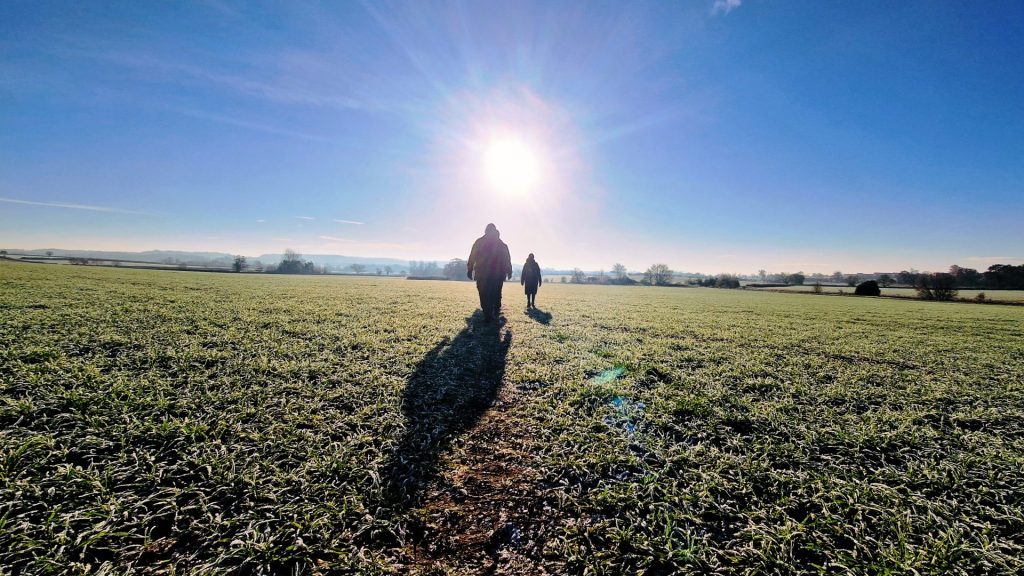
The path gets busier as we approach Stratford-upon-Avon. After departing the canal into the town centre, we pick through the weekend crowds to the finishing point — another bench, this time by a visitor information centre. The town is full of Christmas, lights hanging across the shops and above market stalls, rides and carols accompany the chatter. We head for warmth and a drink, but we didn’t book a table in advance, so we have to pop into a few pubs (an interesting way to discover various haunts, albeit brief!) before settling into The One Elm, where Saira and Mary meet us after their walk.
On the multi-train journey home, I realise that this is my last Slow Ways walk of 2022. It is a stark contrast to my first ever Slow Ways journey back in March, when I’d set out on my own to get to Midhurst over three days, marching to my own pace with podcasts for company. I hadn’t known then that people were walking Slow Ways webs around their area or gradually lengthening their waylists across Great Britain. I hadn’t conversed with anyone about noticing when the logos on bins changed or the differences between gates and stiles. I hadn’t debated about walking for scenery, pleasure, exercise, transport, or all of the above.
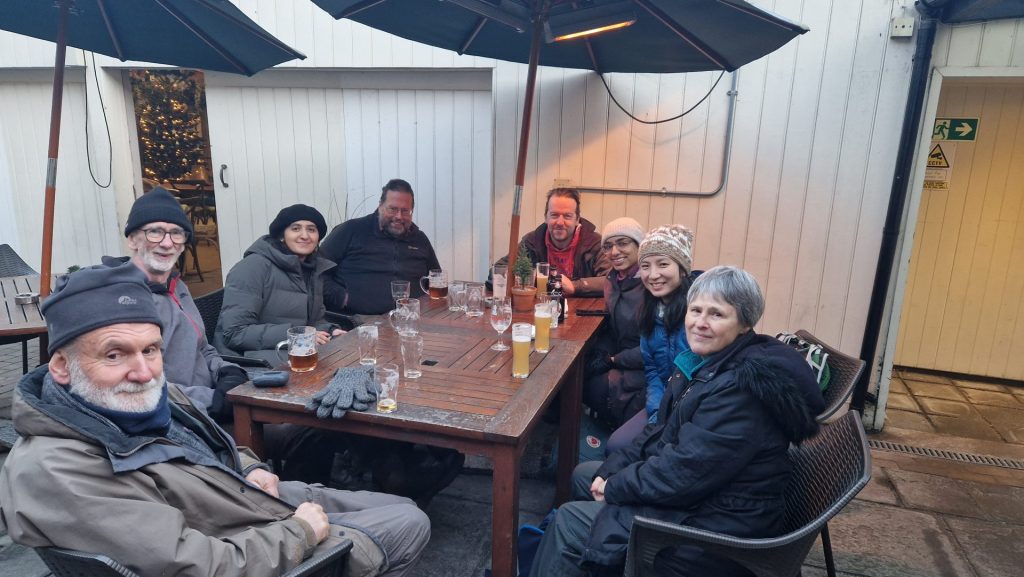
I remember a moment after we stopped for a snack break. Ken asked, “How do you like the route so far?”
“Quite a lot of canal, but really nice!” I answered.
“Is that a criticism?” John asked. I mulled it over a bit.
“It is what it is, isn’t it?” Sure, it’s a non-committal answer, but if the Slow Ways community has taught me anything, it’s that you never assume anything about a route. Routes are mere lines on a map until people bring them to life by walking and wheeling them, feeling the landscapes through their senses, and interpreting their own experiences of walking to share with others.
In walking with others, I am learning more about what walking is and can be in a way I never could alone. We walk to get from one place to another, maybe to get lost, maybe both. We follow coastlines to hear the crashing waves because the sea feels like home. We clamber up mountains to be above the clouds. Or to temporarily exhaust ourselves out of despair. We wander fields and valleys for the joy of seeing flora and fauna change with the seasons. We trace the ancient footsteps and roads to absorb history. We walk to forage — for food and for peace of mind. We walk to test what is possible, pushing not only land boundaries but our own.
It is humbling and inspiring, and I can’t wait to grab my boots and head off to the next one.
Read Ingrina’s tips for making the best of multi-day hiking, followed by Saira’s account of her first walk with the super-volunteers. Want to go on a journey starting from Henley-in-Arden or Stratford-upon-Avon? Explore the routes, and sign up to walk and review Slow Ways. Follow us on Instagram, Twitter and Facebook.
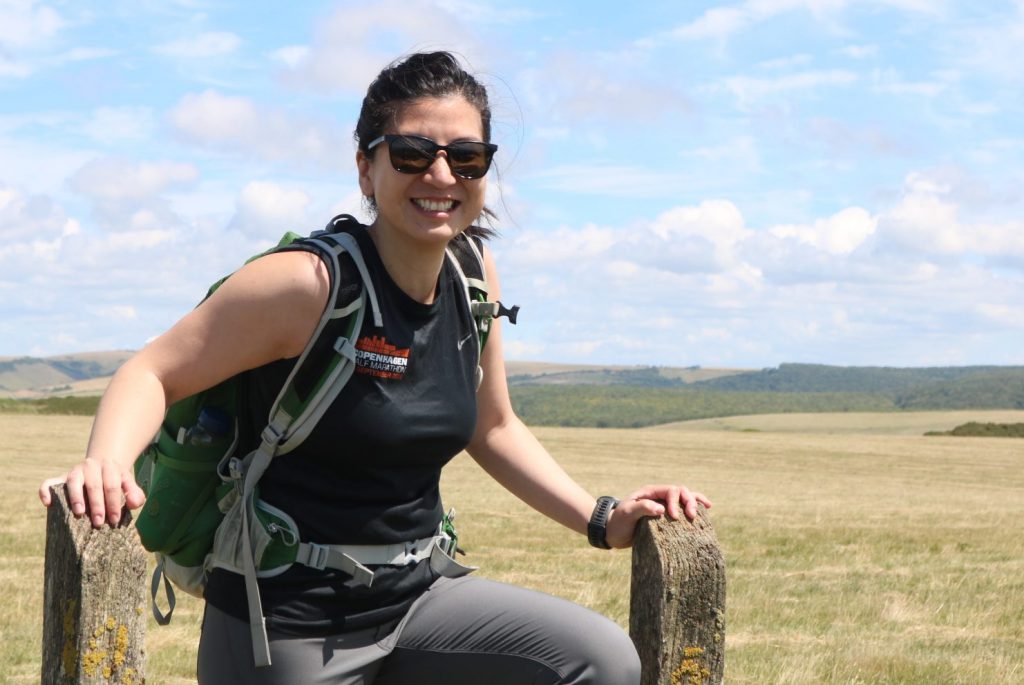
Ingrina Shieh
Ingrina Shieh is a volunteer London National Park City Ranger and passionate active traveller who loves exploring places and connections on foot. Ingrina has walked in many different parts of the UK on established trails in between cities or towns. Her recent solo journey took her on 15 routes over three days from London to its closest national park, South Downs. She particularly loves multi-day hiking and camping and is now working towards a UK Mountain Leader Award.